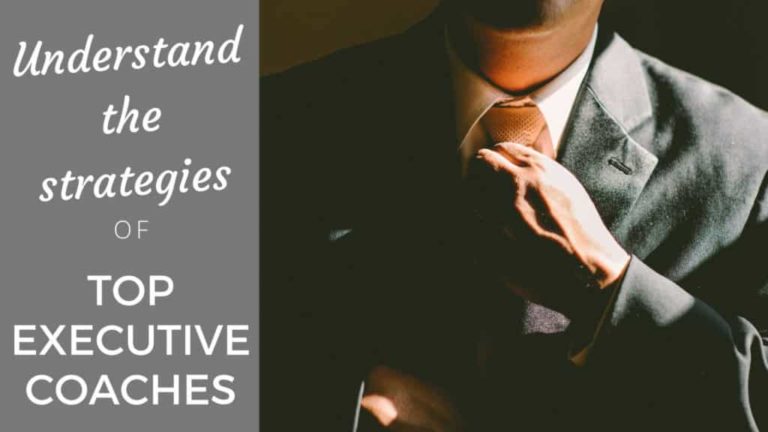Are you having difficulty making a name for yourself in the executive consulting business? Are you hoping for a sorcerer’s wand that will enable you to succeed? Then you have arrived at the ideal location and time in your career.
I cannot offer you a magic wand. Still, I can reveal some of the fundamental methods used by top senior consultants to improve their executive consulting careers and propel them to new heights of success.
If you’re still unsure how to become a consultant, read this –Become a consultant: Pursue your true calling
Allow me to begin by discussing my experience as a consultant mentor.
A few months ago, I was approached by a manager from a respected firm who was having difficulty motivating his team to reach new targets. I realized something was wrong.
If the situation is not resolved quickly, it will jeopardize the manager’s capacity to contribute to the organization. I met with him to ascertain his concerns and determine where he was wrong.
The manager’s performance was first assessed by gathering input from the team. Later, the manager received a hard copy of the feedback. He went over everything thoroughly and penned a concise summary of each significant subject.
I assisted the management in addressing one subject at a time. We used to meet regularly, and I would help him achieve his goals.
All of the themes were approached methodically. Six months later, the team was surveyed again for the feedback. This time, the response was unique. They received favorable reviews.
This is an excellent illustration of how elite executive consultants develop strategies, implement them, and touch the lives of a complete team.

Are you constantly on the lookout for top executive consultants’ strategies? Do you ever wonder how they get to the top?
I’ll offer all of the best executive consultants’ essential strategies, which will provide you with insight into your executive consulting firm.
1. Fix The Issues
A senior manager at a multinational corporation was having difficulty meeting company objectives. He sought me to resolve this matter, and after hearing what he had to say, I felt it would not be difficult to determine. I chose not to offer him a temporary solution. I recognized his difficulties and asked a few inquiries. My questioning clarified his issues, and he was subsequently able to resolve them.
Top executive consultants do not merely provide advice; they engage their clients and challenge them to think creatively. Allow your clients to investigate the fundamental causes of their difficulties to find solutions. They must invest time in comprehending their challenges since clarity will enable them to identify more effective solutions.
2. Explore Innovative Approaches
Marshall Goldsmith, a renowned executive consultant, has authored an incredible book on effective advising, ‘What Got You Here Won’t Get You There.’ Don’t forget to pick up a copy of the book.
The book’s title is precisely what the strategy indicates in today’s environment. I had the opportunity several years ago to tutor the clever founder of a fledgling publishing company.
She has the abilities and ability to accomplish goals but cannot unite her team. She attended one of my executive coaching training courses to maximize her potential. While she is an intelligent individual, I suggested that her group also requires good direction.
They can only work together if she attempts to motivate them. I was able to assist her and explain to her that success now depended on her capacity to inspire her colleagues and the quality of her job.
Her mentality shifted with time, and she has developed more outstanding expertise in leadership qualities.
3. Ascertain Realistic Goals
Are you confident of your objectives or how you intend to accomplish them? What hurdles might you encounter? You must address these concerns to the individual with whom you are consulting.
Henry, an app developer at a prominent app development firm, encountered an issue during the development stage. His objective was to improve the app. However, my concept was distinct. I wanted his company to be recognized for more than just developing fantastic software.
I was required to submit numerous inputs and feedback to accomplish this. As a result, he gained acclaim for his work in the digital realm. Additionally, the company’s kitty had a variety of trophies.
Do you not believe it adds to the worth of your path toward your goal?
Similarly, when people are in the early stages of business, they attempt to uncover their true objectives. Numerous top executive consultants are available to assist them in developing milestones and tracking them.

Many years ago, an accomplished product manager paid a visit to one of my advising sessions. He was an expert at predicting which products would gain mass favor shortly.
For him, everything was insignificant, and he failed to grasp his potential. This is where my function as an executive consultant comes into play.
Why would you want to ignore your strengths if they can aid in your growth? I pushed him to make the best use of his gifts and to appreciate their value.
It aided him in expanding his organization and reaching a larger audience. He experimented with some incredible things that have now gained worldwide popularity.
Additionally, you can read What’s Wrong with Your Executive Consulting Strategy to learn about your strategy’s shortcomings.
5. In Between, Slow Down
Leaders, managers, and employees work on a 24-hour basis. While this boosted output, it also raised pressure.
Consider a workplace in which employees work continually but are not connected in any way. Will this team sustain itself for an extended period?
How will you manage such a group? Even if the team is functioning effectively, it needs time to calm down and avoid burnout.
According to top executive consultants, ‘you must slow down to accelerate.’ Can you recall a period when you disconnected from work and spent time in nature?
I propose to many of my customers to watch a sunset or take in their surroundings. It works, and their mind returns to total harmony once they regain control.
6. Deal With Hard Times

In 2016, a multinational corporation approached me due to declining revenue. I was hired as an executive consultant to mentor senior executives to refocus the organization.
I led sessions on ‘increasing employee engagement.’
So, what are your thoughts on the best method to employ here?
To begin, communicate with your employees and demonstrate empathy. Following that, keep eye contact to establish confidence.
You can incorporate comments such as “I understand” or “I’ve been in that scenario” into your speech. Avoid ambiguity and exaggerating the severity of the situation.
Refrain from being judgmental. So, what else do you need to change? I recommended managers spend 15 to 30 minutes with each staff member.
This action enabled them to think together, and they took decisive action to effect change. What happens then? The company’s performance surged, and for the first time, management recognized the critical nature of employee engagement.
The preceding event was fruitful because each team member saw the futility of offering a thought without involvement.
Additionally, I suggested that one of the executives close the office door for 15 minutes each day. I advised him to inform everyone not to disturb him for some time. Additionally, I requested that he refrain from responding to phone calls or emails. This is referred to as no contact time.
I informed him that now is the time for him to focus on topics that require immediate care. It worked wonders, and he continued to use it in the future. I adapted this method from Jeff Wolf, a dynamic and top executive consultant.
7. Self-Involvement Assembles Teams
I saw that many managers were more concerned with instructing than with teamwork throughout my consulting career. This is where top executive consulting methods come into play.
It is much simpler to say than to do.
If you want to have a strong team, you must become involved in your unit’s job rather than simply instructing.
By integrating myself in teamwork, I’ve formed numerous teams for my clients.
The teams recognized that I did not wish to embarrass them and prepared to deal with the circumstance.
This provided them with a sense of security and motivated them to give their all to their profession.
8. Educate Yourself About Emotional Intelligence
At times, you may regret making commitments. You must ask three questions, as Craig Ferguson suggests.
Is this necessary to state?
Is it necessary for me to state this?
Is now the appropriate moment to express this?
You can avoid regrets by asking the correct questions. However, why is it that every firm is obsessed with engaging executive consultants to develop emotional intelligence behaviors?
According to Goelman, Emotional Intelligence is “the aptitude for identifying our own and others’ feelings, motivating ourselves, and effectively managing our own and others’ emotions.”
Allow me to illustrate.
Robin, a manager at a software company, was notorious for avoiding deadline conversations. This used to be a source of mental distress for him.
Robin was ignorant of this, and everyone around him attempted to maintain a respectful distance. As a result, he needed an executive consultant to convince him of this.
Robin saw through a consulting program that his behavior was causing tension with his teammates.
Here, the consultant taught Robin how to manage his emotions. He became aware of the feelings that motivate his actions.
Many executive consultants are untrained to assess and identify emotions. As a result, it creates a behavioral transformation puzzle.
Thus, as an executive consultant, you must learn to deal with your customers’ conduct.
As with Robin, a person must gain the ability to think and act efficiently. Thus, it is frequently advised that excellent and negative emotions be distinguished.
9. Give Statements
If you give individuals direct feedback, the likelihood is that they will see it as harsh. What do senior executive consultants do in these instances?
Assume you wish to make a recommendation to someone. Then you can say, “Lisa, I have some incredible new project ideas.” It may prove advantageous.
Can I express my ideas now, or can we discuss them later?” This indicates that you are being precise and concise.
Explicit remarks facilitate and simplify communication, avoiding potential disagreements. This is the critical first step in initiating any conversation.
Don’t forget to check out the 20 Most Effective Consulting Approaches since these techniques will help you improve the effectiveness and success of your executive consulting practice.

10. Create A Sensation Of Ownership
Allow me to relate an instance here.
Sara, the President of the Human Resources Company, was incapable of managing her time effectively. She was squandering time, reacting to minor matters. In reality, she was not considering the big picture.
Additionally, Sara was unable to maintain concentration. She spent more time resolving the issue than conversing with the employees.
As a result, her time was being squandered. Her devoted staff was not given good direction, and as a result, they continued to underperform. She despised those who offered her counsel. Additionally, she was unable to provide input.
This was when the strategies of top executive consultants came into play. Sara was first tasked with providing daily or weekly feedback to staff. This ultimately resulted in accountability.
She began communicating with her team members more frequently and precisely guiding them. What would have happened if she had only educated them once a year? Employees would have been terrified. Isn’t that so?
Additionally, employees were questioned about why they did not adhere to company regulations and perform quality control procedures on time. Appropriate training was the requirement of the hour. Sara accomplished all of this with the assistance of an expert adviser.
What was successful in this instance was the scientific approach to the problem. It doubled sales and provided Sara with time to focus on numerous projects. Because the executive consultant was highly versed in human behavior, Sara’s weakness was detected appropriately.
More emphasis was placed on what an executive should perform and those they should avoid.
The consultant showed Sara two situations during this procedure. The first was a positive development. How would Sara’s team profit from Plan A? What are the negative consequences if plan A fails? Finally, the critical phase arrived, during which development was monitored.

11. Build Solid Connections
Are you nervous while meeting someone for the first time? In these instances, you must seek clues about how the individual wants to initiate the conversation.
I suggested that one of my clients initiate the interaction in the manner desired by the other party. This way, the individual will also attempt to communicate opinions following your preferences. With this initial step, you can establish a solid bond.
The Key To Effective Consulting is a must-read for anybody interested in developing practical consulting abilities that significantly improve their consulting programs.
12. Avoid Making Negative Assumptions
It is frequently the case that those who think intentionally believe that others who think too quickly are impulsive, and vice versa. How may such pessimistic assumptions be avoided? According to top executive consultants, such preconceptions impede the business’s progress.
There was one client who frequently maintained a severe demeanor and reasoned logically. She often judged others and labeled a person she thought amusing as unprofessional.
However, when she discovered how productive the playful individual is, she saw her error. Rather than dismissing others as less professional, she began to consider that others are not as wired as she is.
She regarded it objectively. This aided her in increasing her productivity and fostering better relationships at work.
Therefore, avoid negative assumptions at all costs, as they are not constructive and may obstruct the development of strong ties.

13. Ascertain That Goals Are Supported by Visions
Always include a rationale for your objectives. What if the individual with whom you wish to consult lacks an action plan or a vision? Consider a rugby consultant attempting to coordinate each player’s movement in the absence of a predetermined schedule.
For example, top executive consultants always inquire why you established the objectives.
Are your objectives consistent with those of your team members?
Are they aligned with the organization’s strategic goals? What happens if the desired outcomes are not obtained?
Ascertain that goals are motivated by passions and visions since these will inspire both you and your clients to succeed.
How do senior executive consultants leverage their leadership narrative? Why do they do it?
There are numerous explanations for this. This is a phrase I frequently use when my clients are about to embark on new endeavors.
I adopted this method after Warren Bennis, a top management consultant, said crucible stories. These difficulties or trying times in life result in new insights.
In 2018, one of my clients intended to introduce a new device. He was anxious and unsure if he could launch it or not. He asked himself several questions- “Can I pull it off?” Will I be able to build it successfully? “How am I going to do it?”
He contacted me with all his reservations, pleading with me to mentor him. All I did was share some of my inspirational stories to reassure him that he could accomplish the objective with the help of his team.
What do you think? My stories encouraged him and instilled in his clarity and confidence. He subsequently successfully introduced the gadget and won the year’s Best Employee award.
Aren’t stories incredible? Therefore, do not overlook the importance of inspiring your clients through stories.
15. Maintain Transparency
One must develop team transparency by posing questions such as:
Do I routinely allow folks to become acquainted with me?
Have I communicated my principles and perspectives to team members?
Am I rational in my decision-making?
All of these factors contribute to the development of trust and a stronger tie between your team members.
Consider the Success Story of Alabama Power, which benefited from an exceptional consulting strategy.
This method has been used by a variety of organizations.
Here it is…
Alabama Power (APCO) is a well-known electric utility in Alabama. It was undergoing significant changes due to the deregulation of the power sector. As a result, it established an executive consulting division within the organization.
APCO began using the executive consulting technique in 1997. The development program involved all organization members, including the president and top management. Trainers were trained to ensure that the program’s effects were felt throughout the business.
The most social aspect was that each member was counseled on pursuing a career as a consultant. It stressed the critical point that all executive team members will serve as advisers to other team members. They were candid enough to discuss all of the techniques and methods they learned following the session.
The entire approach increased leadership capabilities, collaborative abilities, and successful consulting. Even the Chief Information Officer acknowledged that this was APCO’s best year.

16. Establish Appropriate Communication Styles
To improve rapport and comprehension, top executive consultants alter their communication approach.
For instance, while appropriately cupping hands while swimming, the consultant may instruct the consultee to pretend to pet a dog. This enables the individual to maintain proper swimming form.
Thus, to ensure the success of your consulting, you must adapt your communication style to your clients’.
In Summary:
An executive consultation is a critical tool for effectively training the team. For instance, a consultant can assist the management in resolving workplace politics by providing insight into peer behavior.
Executive consultants assist the team in enhancing performance, developing skills, reducing stress, increasing confidence, and increasing innovation, among other things.






